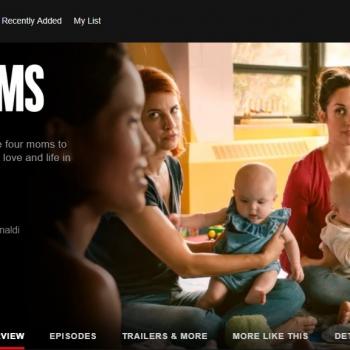This is part 1 of a guest post by Athena Carson, a member of the Catholic Working Mothers Facebook group.
Many people have pointed out how complicated it can be to navigate family life in the United States, particularly in the areas of balancing family life with work. It’s an ongoing discussion as to what that means and what (if anything) we should do about it.
Well, Senator Joni Ernst (R-Iowa) and Senator Mike Lee (R-Utah) have introduced a bill called the Child Rearing and Development Leave Empowerment (CRADLE) Act, which would allow new parents to elect to collect social security for up to three months after the birth (or adoption!) of a child. The trade-off? For each month a person elects to collect social security as a new parent, their retirement is delayed by two months. So if a new parent collects three months of social security now, they delay their collection of social security in retirement.
Is This a Good Deal?
Overall, I think so. I notice that delaying retirement by potentially 6 months per kid can add up very quickly, but consider a couple of things:
a) it’s optional – so it’s up to each family to decide if it’s worth the trade-off for them, and it’s also up to which parent will take the leave (or both? I’m not clear if that’s an option);
b) life expectancy is significantly longer than it was when social security was implemented, so there’s a larger potential retirement window to play with;
c) delaying retirement by two months for each month of parental leave elected is a rough attempt to present value the retirement benefits by a few decades, which means that in the long run this program is revenue-neutral.
Keep in mind that none of the above says anything about the date you actually retire from your job. You are free to save for retirement on your own, take advantage of whatever programs your employer has, and pick a date that works for you. All this does is change the date you can begin to collect your Social Security benefits in retirement, so consider that as a piece of your overall retirement picture.
But Joy Pullman over at the Federalist is having none of it.
Ms. Pullman’s thesis is:
– Declining fertility rates are bad.
– The US currently has no paid parental leave policies.
– Other advanced countries have paid parental leave policies.
– These same advanced countries have lower fertility rates than the US.
– Therefore, if the US adopts a paid parental leave policy, fertility rates in the US will also drop.
– Also, here are twelve reasons why paid parental leave is bad for society, not connected with the concepts laid out as the overall thesis.
Got that?
Right. Okay.
There is way WAY more to unpack in this piece than anyone would want to read, and frankly way more than I want to write. So I’m not going to go down every rabbit hole, call out every nitpick of colloquial vocabulary, or refute every incorrect point amidst the ocean of lazy reasoning, but I will address the larger points and themes.
Correlation Is Not Causation
The reasons why a society might have increasing or decreasing fertility are complex and not explainable by one small social policy decision. If you truly believe that the correlation between paid parental leave and decreasing fertility somehow means that paid parental leave causes decreasing fertility, I have a whole bunch more correlations you might be interested in.
Paid parental leave and declining fertility are not causally connected in any meaningful way.
Declining Fertility
I see this idea from time to time in certain conservative circles. The basic idea is that declining fertility leads to a declining population which will lead to severe economic decline. A demographic bomb.
And I believe it.
Any economic theory presupposes economic participants (i.e. people). Reduce the number of people participating in the economy, and necessarily there will be less economic activity. Significantly reduce the number of people participating in the economy, and necessarily there will be significantly less economic activity.
What does this have to do with paid parental leave?
“Incentivize something and you get more of it; penalize something and you get less of it.”
I don’t know who said that initially, but it is a truism for economic theory; as such, it is stitched into the fabric of every economic and tax policy. It is also a truism for human behavior as a whole, as every parent, teacher, and manager knows – reward good behavior (incentivize something and you get more of it) and punish bad behavior (penalize something and you get less of it).
There have always been (and always will be) challenges to raising children. There have always been (and always will be) people that opt out of raising children because of the challenges. There have always been (and always will be) people that do it anyway. The fact that our fertility rate in America isn’t even lower in the face of all these challenges is a testament to our irrepressible optimism – one of the truly great things about us.
But at the same time, we are only human. And when the challenges that families face increase over time, a society responds. Those people who are on the margins with regard to starting or expanding their family (i.e. those who are either on the fence or close to it) actually do change their decision-making. Nowadays, with increasing pressure that parents experience, people that do have children are having fewer of them, and an increasing number of people are having zero children.
If we can make a simple change (that’s revenue neutral in the long run, to boot) that helps people be more free to have the children they want, and take better care of the children they are having anyway, that’s a change we really should make.
In part 2, we will talk about Ms. Pullman’s other objections to the CRADLE Act. I promise that the above discussion will matter, even though her points as she wrote them have little or no relation.













